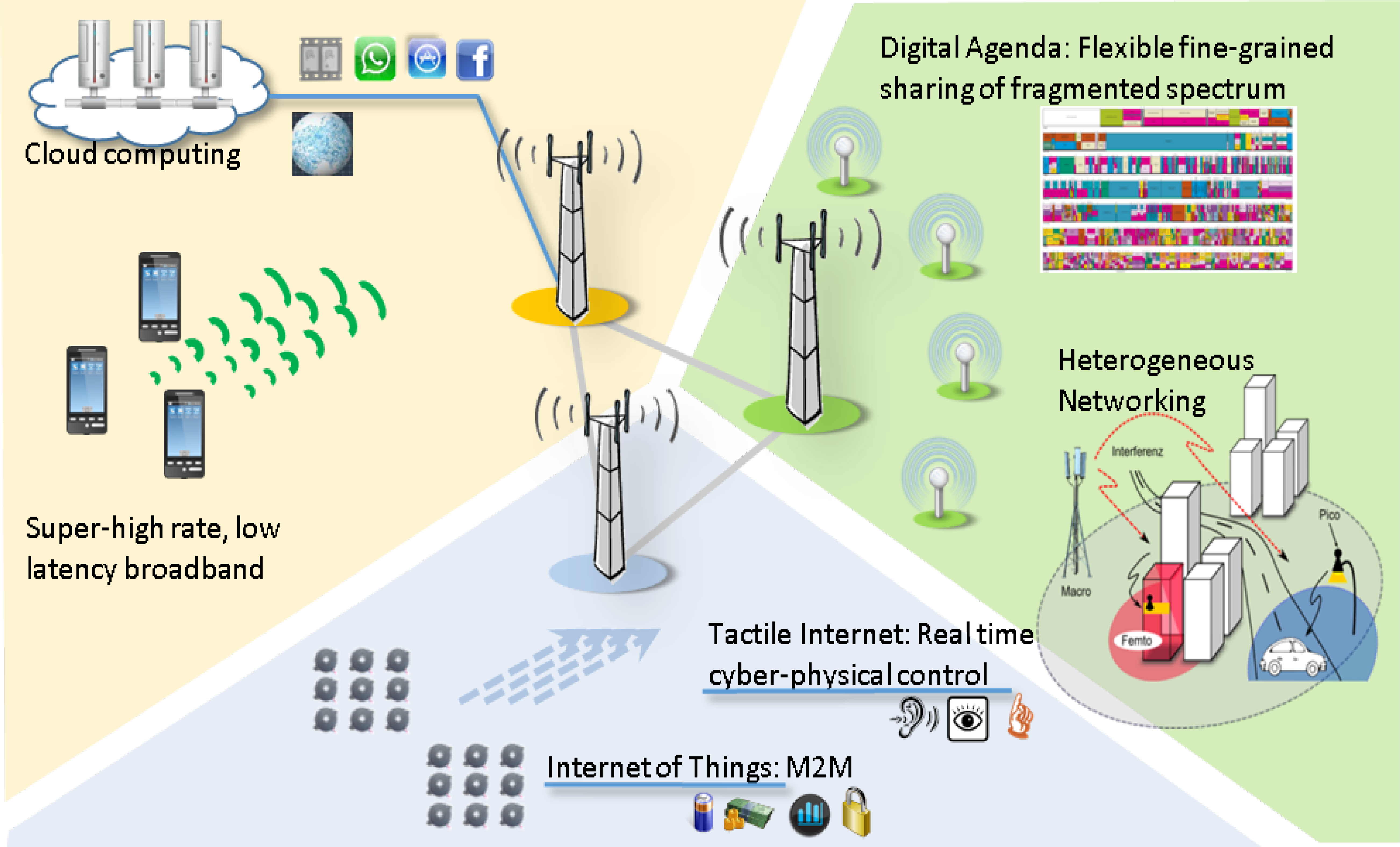
With the upcoming challenges of Internet of things and massive machine-type communications, future 5G wireless communication systems are expected to be able to support a very large amount and a very diverse types of devices. Besides the traditional high-end mobile devices such as smart phones and tablets, more and more low-end devices (e.g. simple sensor elements) also need to be efficiently supported by e.g. a single macrocell.
The current 4G embodying long-term evolution (LTE) is however not designed for that diverse types and large quantities of devices. Thus, the whole LTE design paradigm has to be rethought in 5G. Beginning with the most fundamental aspect of the physical layer, more advanced waveform technologies other than OFDM can be considered in 5G. Various multicarrier modulation schemes are proposed to replace OFDM for future 5G wireless communication systems such as:
- Filter bank multicarrier (FBMC)
- Universal filtered multicarrier(UFMC, a.k.a. UF-OFDM)
- Faster-than-nyquist (its multicarrier implementation)
- Generalized frequency division multiplexing (GFDM)
